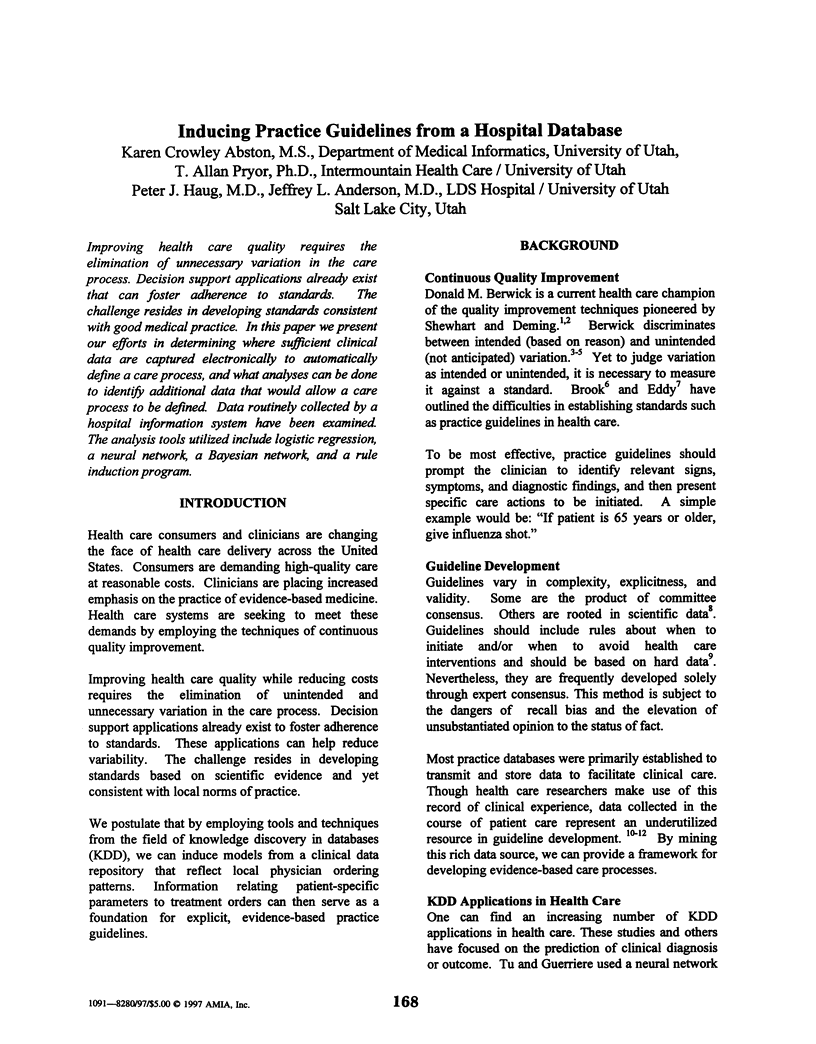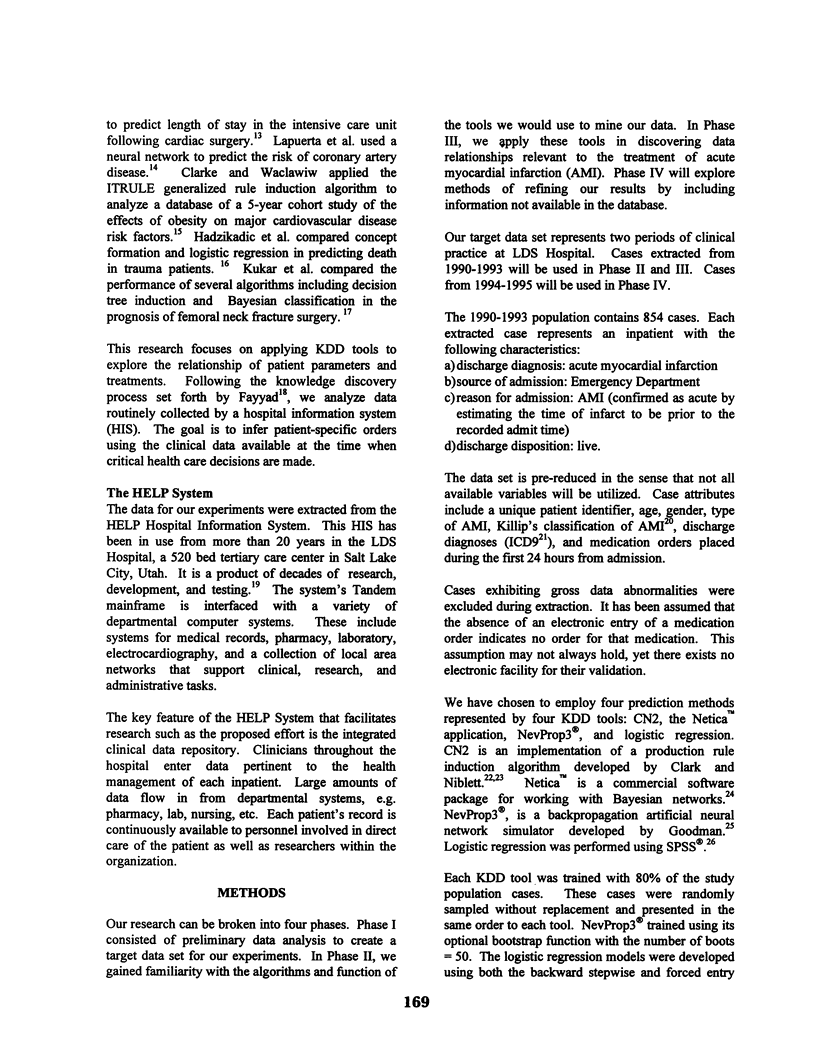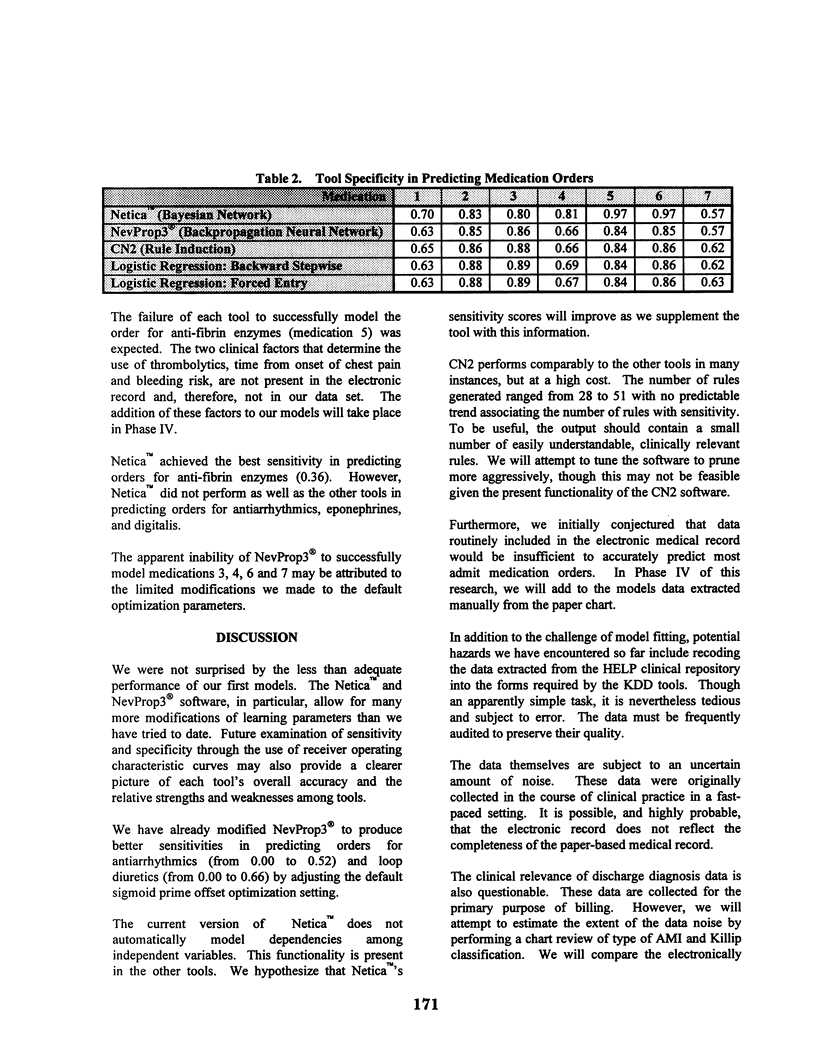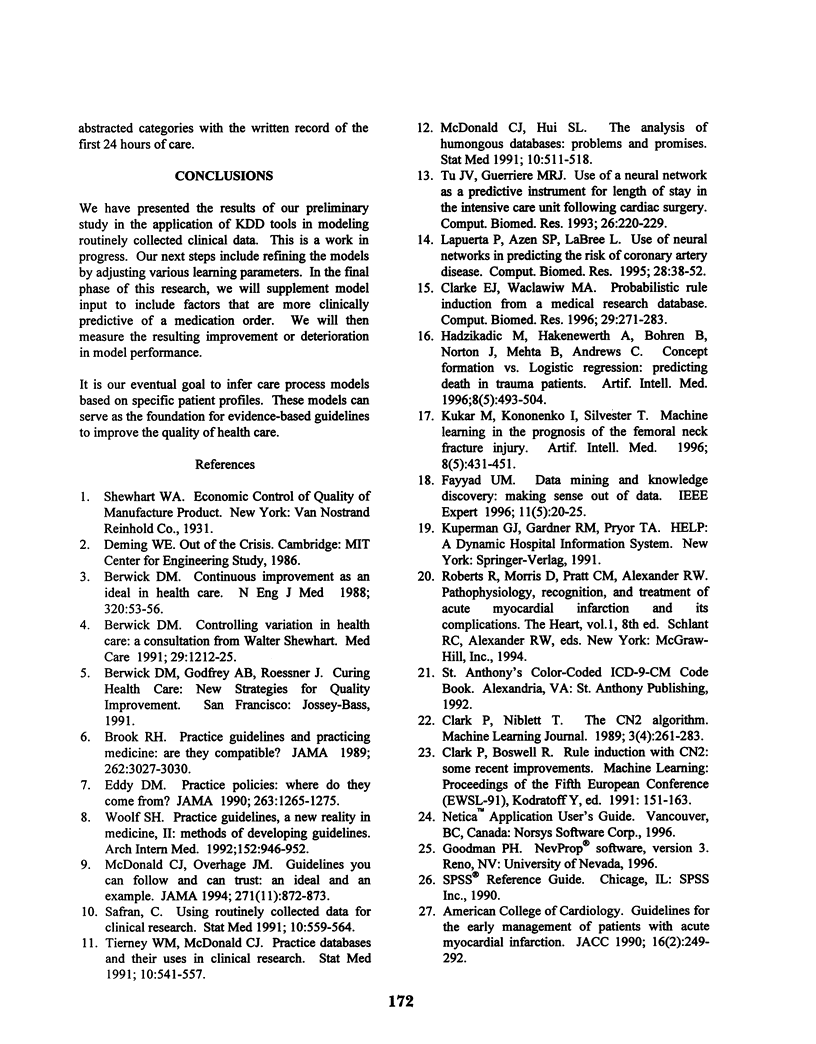Abstract
Improving health care quality requires the elimination of unnecessary variation in the care process. Decision support applications already exist that can foster adherence to standards. The challenge resides in developing standards consistent with good medical practice. In this paper we present our efforts in determining where sufficient clinical data are captured electronically to automatically define a care process, and what analyses can be done to identify additional data that would allow a care process to be defined. Data routinely collected by a hospital information system have been examined. The analysis tools utilized include logistic regression, a neural network, a Bayesian network, and a rule induction program.
Full text
PDF




Selected References
These references are in PubMed. This may not be the complete list of references from this article.
- Berwick D. M. Continuous improvement as an ideal in health care. N Engl J Med. 1989 Jan 5;320(1):53–56. doi: 10.1056/NEJM198901053200110. [DOI] [PubMed] [Google Scholar]
- Berwick D. M. Controlling variation in health care: a consultation from Walter Shewhart. Med Care. 1991 Dec;29(12):1212–1225. doi: 10.1097/00005650-199112000-00004. [DOI] [PubMed] [Google Scholar]
- Brook R. H. Practice guidelines and practicing medicine. Are they compatible? JAMA. 1989 Dec 1;262(21):3027–3030. [PubMed] [Google Scholar]
- Clarke E. J., Waclawiw M. A. Probabilistic rule induction from a medical research study database. Comput Biomed Res. 1996 Aug;29(4):271–283. doi: 10.1006/cbmr.1996.0020. [DOI] [PubMed] [Google Scholar]
- Eddy D. M. Practice policies: where do they come from? JAMA. 1990 Mar 2;263(9):1265–passim. doi: 10.1001/jama.263.9.1265. [DOI] [PubMed] [Google Scholar]
- Hadzikadic M., Hakenewerth A., Bohren B., Norton J., Mehta B., Andrews C. Concept formation vs. logistic regression: predicting death in trauma patients. Artif Intell Med. 1996 Oct;8(5):493–504. doi: 10.1016/S0933-3657(96)00356-9. [DOI] [PubMed] [Google Scholar]
- Kukar M., Kononenko I., Silvester T. Machine learning in prognosis of the femoral neck fracture recovery. Artif Intell Med. 1996 Oct;8(5):431–451. doi: 10.1016/S0933-3657(96)00351-X. [DOI] [PubMed] [Google Scholar]
- Lapuerta P., Azen S. P., LaBree L. Use of neural networks in predicting the risk of coronary artery disease. Comput Biomed Res. 1995 Feb;28(1):38–52. doi: 10.1006/cbmr.1995.1004. [DOI] [PubMed] [Google Scholar]
- McDonald C. J., Hui S. L. The analysis of humongous databases: problems and promises. Stat Med. 1991 Apr;10(4):511–518. doi: 10.1002/sim.4780100404. [DOI] [PubMed] [Google Scholar]
- McDonald C. J., Overhage J. M. Guidelines you can follow and can trust. An ideal and an example. JAMA. 1994 Mar 16;271(11):872–873. [PubMed] [Google Scholar]
- Safran C. Using routinely collected data for clinical research. Stat Med. 1991 Apr;10(4):559–564. doi: 10.1002/sim.4780100407. [DOI] [PubMed] [Google Scholar]
- Tierney W. M., McDonald C. J. Practice databases and their uses in clinical research. Stat Med. 1991 Apr;10(4):541–557. doi: 10.1002/sim.4780100406. [DOI] [PubMed] [Google Scholar]
- Tu J. V., Guerriere M. R. Use of a neural network as a predictive instrument for length of stay in the intensive care unit following cardiac surgery. Comput Biomed Res. 1993 Jun;26(3):220–229. doi: 10.1006/cbmr.1993.1015. [DOI] [PubMed] [Google Scholar]
- Woolf S. H. Practice guidelines, a new reality in medicine. II. Methods of developing guidelines. Arch Intern Med. 1992 May;152(5):946–952. [PubMed] [Google Scholar]


